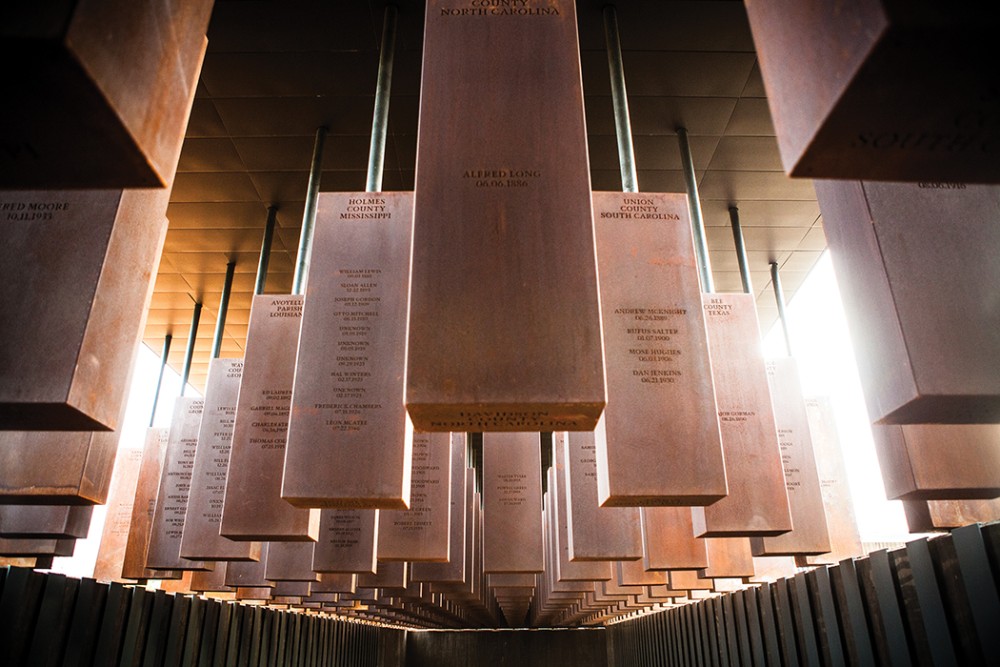Lynched but not forgotten
The National Memorial for Peace and Justice represents a watershed moment in the idea and practice of what a public memorial can be.

The National Memorial for Peace and Justice, which commemorates African American victims of lynching from 1877 to 1950, is the most extraordinary and promising national memorial in a generation or more. But it is not just a memorial; it is a confrontation. Located in Montgomery, Alabama, the new public exhibit partakes in that city’s history of nonviolent protest. In this case the protest is not for rights but for memory. It elicits a reckoning with the horrors of an essential part of American history that has effectively been evacuated—a history that is just too shameful for many people to talk about, if it is remembered at all.
The memorial opened in April, along with the nearby Legacy Museum. Both are projects of the Equal Justice Initiative, an organization founded in 1989 by Bryan Stevenson, who is part of a distinguished tradition of Montgomery attorneys devoted to civil rights. In addition to its legal activities, EJI serves the work of vigilant memory: it recalls the atrocities committed against a people who have been “kidnapped, terrorized, segregated, and incarcerated.” These four themes form the framework of the story told by the museum, which is situated in a former warehouse on Commerce Street once used for holding enslaved people along with the livestock from whom they were legally indistinguishable. The aim of the museum is not just to carry a candle into a dark and unvisited chamber of American history but to flood it with stadium-grade light.
The memorial focuses that unsparing light on one aspect of the museum’s larger narrative: lynching. Designed by Michael Murphy and his team at the MASS Design Group of Boston, it is the architectural embodiment of EJI’s unprecedented six-year research project to document and memorialize the African American victims of lynching in 12 southern states. It grows from the same conceptual soil broken by Maya Lin’s Vietnam Veterans Memorial in Washington, D.C., which soberly presents the names of the war dead with no other identifying information. For their families and survivors, who frequently make charcoal rubbings of names onto paper, this has proven to be a powerfully tactile way of connecting to their loved ones. Like the Vietnam Memorial, the National Memorial for Peace and Justice represents a watershed moment in the idea and practice of what a public memorial can be and do and how visitors relate to it.





